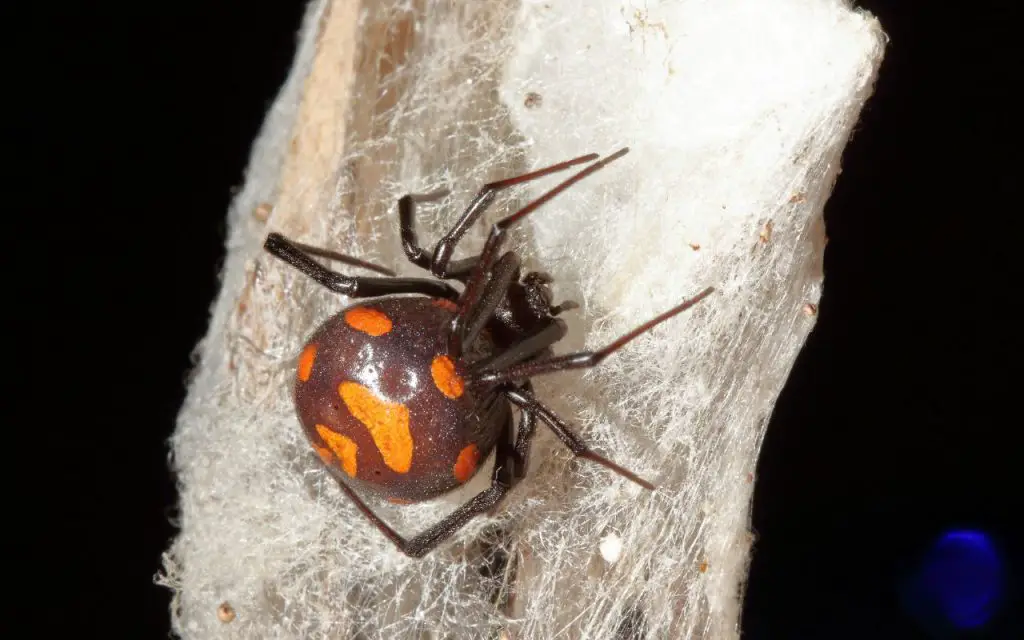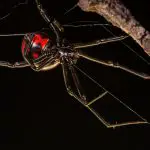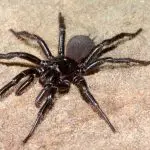Last updated on February 1st, 2023 at 09:57 am
In this article we’ll take a look at some Mediterranean Black Widow Spider facts. Unlike their relatives, this species is particularly colorful…
The Mediterranean Black Widow Spider belongs to the comb-footed spiders. It is common in the Mediterranean regions from Southwest and Central Asia to Southern Liberia. Its Latin name Latrodectus tredecimguttatus means “with thirteen spots” since it is black in color and has thirteen spots on its abdomen. Other common names include steppe spider and European Black Widow.
Mediterranean Black Widow Scientific Classification
The genus Latrodectus consists of many species of spiders popular known as the true widows. Widows. The best way to distinguish between all the species is by their taxonomic classification which places the species according to their behavioral and physical features. Below is the scientific classification for Mediterranean Black Widows.
| Class: | Arachnida |
| Order: | Araneae |
| Infraorder: | Araneomorphae |
| Family: | Theridiidae (comb footed spiders) |
| Genus: | Latrodectus |
| Species: | Latrodectus tredecimguttatus |
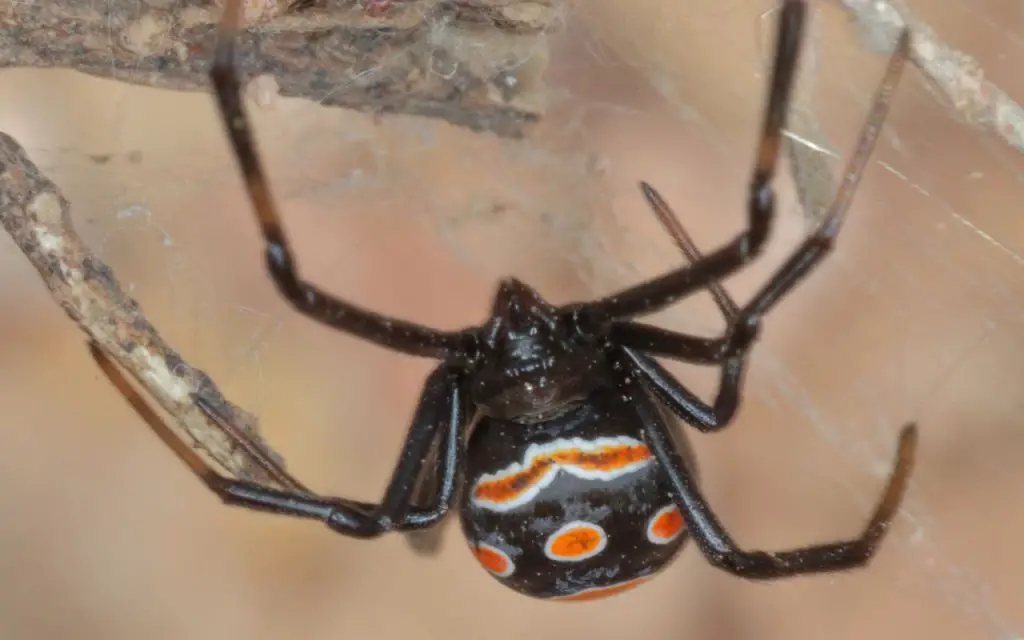
Black Widow Spider habitat
It is easy to find Black Widow Spiders all over the world, but especially in agricultural and urban habitats. However, these spiders love to settle near the ground in dark and undisturbed corners.
In addition, they make their nest sites at the entrances of holes that other small animals dig. You can also find them around construction openings and under wood piles.
Furthermore, low bushes are also common hideout zones for Mediterranean Black Widow spiders. Similarly, Black Widow spiders also find their habitats indoors. They identify dark spots behind furniture, or sometimes under desks. Moreover, they can make their nests in undisturbed crawl spaces in the home or basement areas.
Black Widow spiders are able to build their homes by weaving irregular and loose mesh-like webs. They often attach their webs to objects such as wood piles, walls, loose stones, garage corners, or plants in dark spots.
However, they do not make a symmetrical web similar to that of regular orb-weaving spiders.
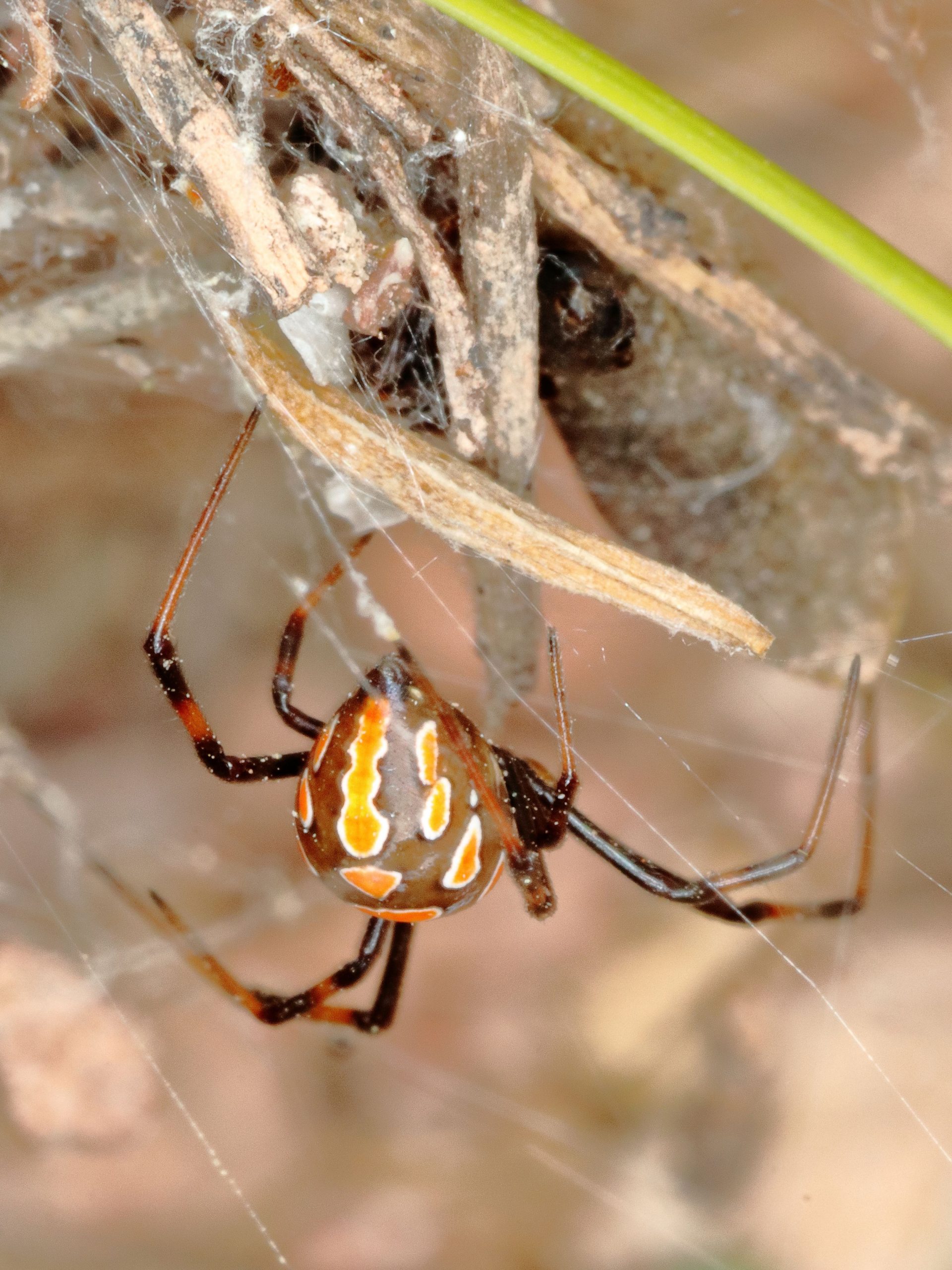
Black Widow Spider Distribution
The Black Widow spiders are each content of the world except in Antarctica. The major difference in Black Widow distribution is that some regions have different species from others.
For instance, North America has mostly black northern species (Latrodectus variolus) and they are majorly in the United States. Still, there are more Black Widows of this species in Southern Canada, mainly in British Columbia.
These spiders are also widespread across the Middle East, Europe, Asia, Austria, Africa, and many other parts of the world.
Black Widow Spider Size
The female Black Widow is about 38 millimeters (1.5 inches) long. The female size is almost double that of the male one. In addition, the female Black Widow can be approximately 8 mm to 12 mm when pregnant. The name “Black Widow” comes from the fact that the female spider eats the male one after mating.
On the contrary, the male Black Widow spider has a smaller abdomen and longer legs compared to the rest of the body. It is to tell an adult male from a younger female from its much slenderer body and long legs.
Additionally, the male one has larger pedipalps; the second pair of appendages of its main body part, similar to many other male spiders. Please read more on Black Widow Spider sizes.
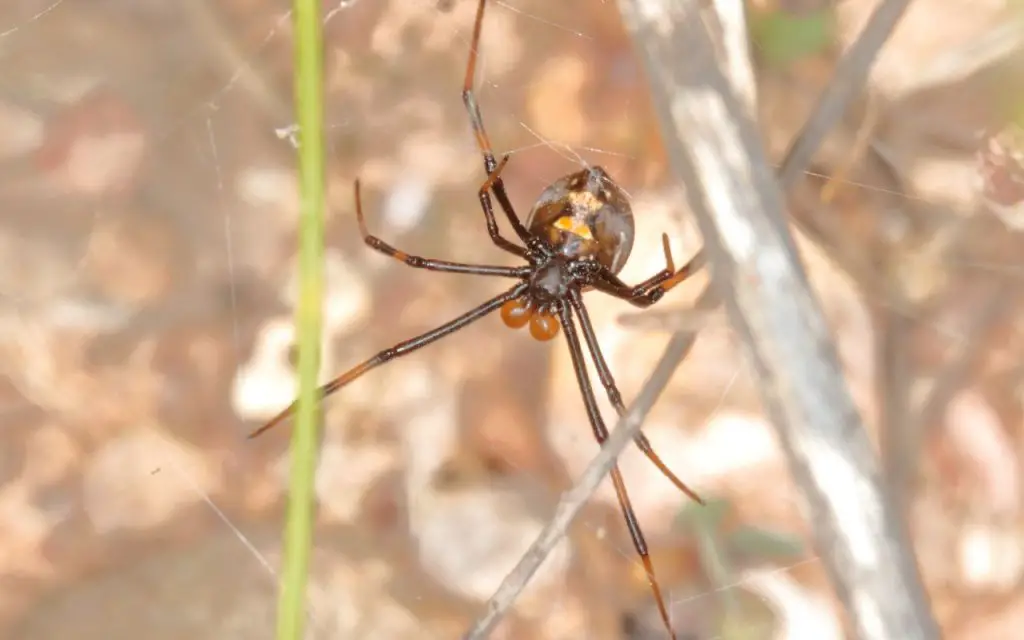
Black Widow Spider Diet
All Black Widow spiders are carnivorous and they prey on insects. They mainly hunt and feed on woodlice, chilopods, diplopods, and other arachnids.
They use their web as a trap for their prey; once the prey gets entangled in the web, the spider comes out of its hideout to feed. It wraps the prey in the web and envenoms it; the venom takes approximately ten minutes to become effective.
During this period, the spider holds the prey tightly in the web. Once the venom takes effect and the prey stops moving, digestive enzymes get released into the prey’s wound. The Black Widow spider then carries its food back to its retreat before eating.
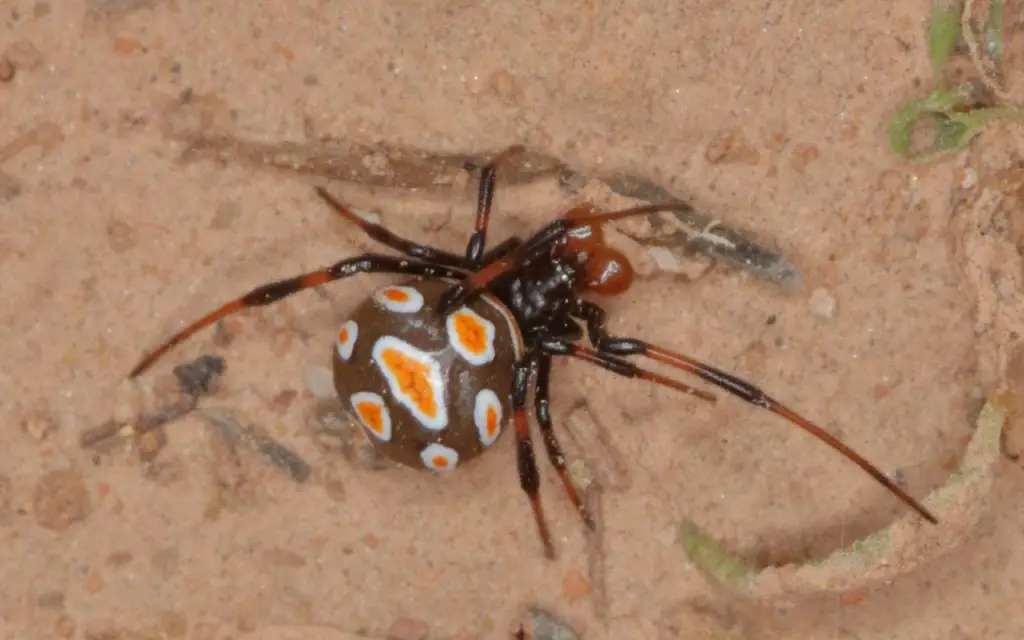
Black Widow Spider Reproduction
Black Widow spiders reproduce by laying eggs. Once a male spider matures, it creates a sperm web, deposits semen on it, and uses the sperm to charge its palpi.
Moreover, Black Widow spiders reproduce sexually when the male puts his palpus into the spermathecal openings of the female spider. On the other hand, the female lays eggs in a globular silken container where they remain guarded and camouflaged.
Please note, a female Black Widow spider can bear about four to nine egg sacs in a single summer. Each sac holds between 100 and 400 eggs. The eggs take approximately 20 to 30 days to incubate.
However, not more than 100 spiderlings survive through this period. An average of 30 spiderlings will pull through the first molting due to conditions such as lack of food, cannibalism, or lack of proper shelter.
Black Widow spiders take about two to four months to mature enough to breed. However, they take approximately six to nine months to attain full maturation. The female ones have a lifespan of up to five years while the male ones have a much shorter lifespan.
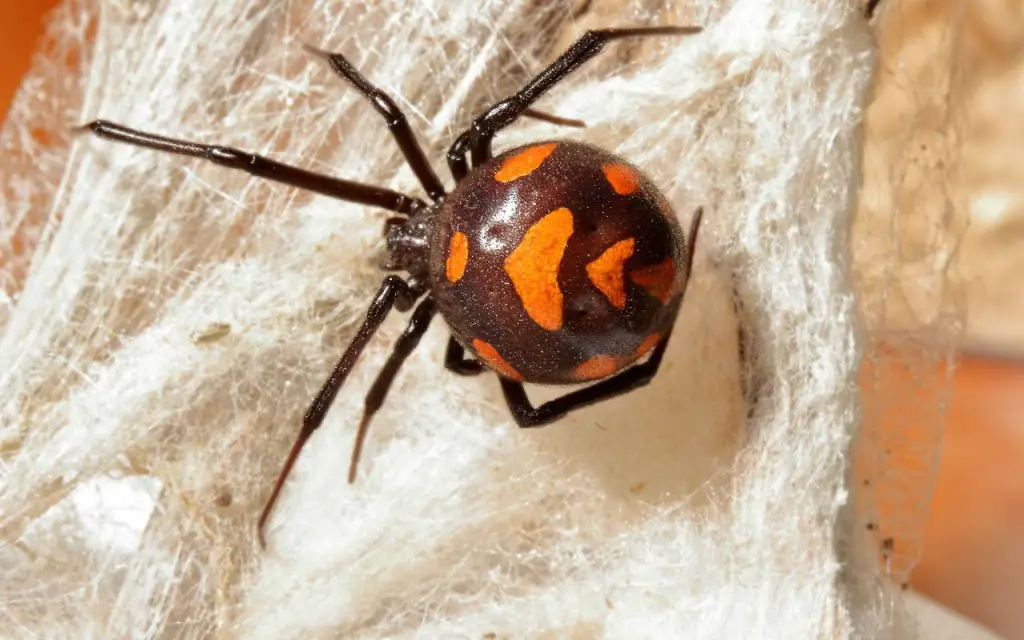
Mediterranean Black Widow bite
Research shows that the Black Widow spider has stronger venom than that of a cobra or a rattlesnake. However, it is hard to detect a spider bite unless you see the spider at the time of the bite and have an expert test it to determine the species. As a result, many cases go uncared for leading to fatal outcomes.
Furthermore, you may not feel the bite of a Black Widow spider stinging like other spider species because their chelicerae are smaller and less powerful. A mature female one has a longer chelicera, about 1.0 mm, which is enough to inject venom into dangerous depths.
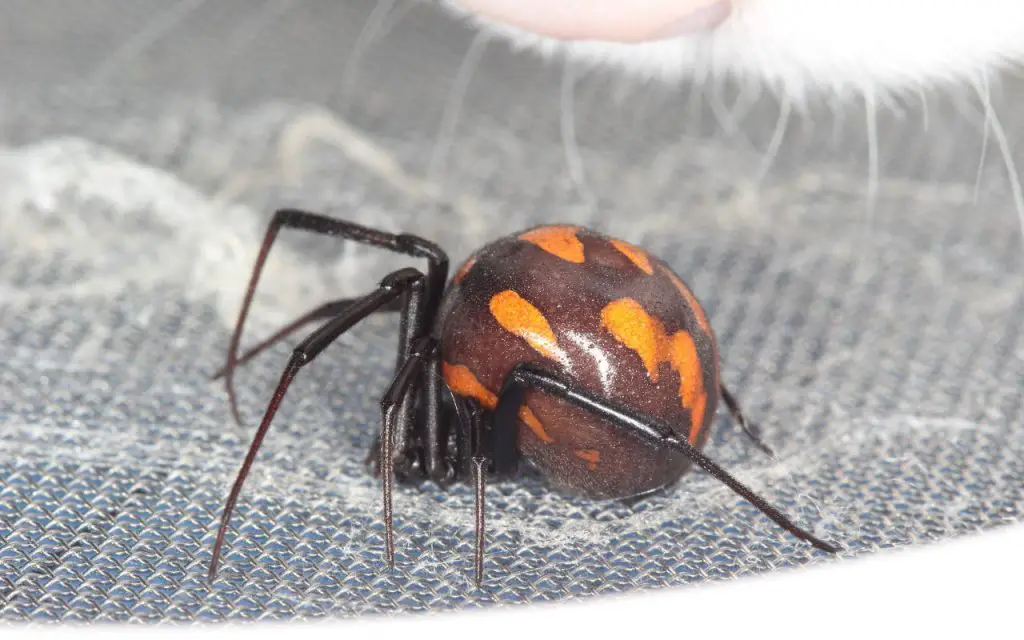
Mediterranean Black Widow Bite Symptoms
The following are some symptoms of a Mediterranean Black Widow spider bite:
- The area around the bite starts to redden
- Severe pain in the chest, back, shoulders, and abdomen
- Severe muscle spasms that cause your muscles to cramp and become rigid
- Diaphragm paralysis which is evident through difficulties in breathing
- A severe rise in blood pressure
- Nausea
- Chills, body weakness, and fever
- Headache, which may partially result from a sudden change in blood pressure
- Profuse sweating
Nonetheless, Black Widow spider venom is treatable, depending on your health, the severity of the bite, and symptoms.
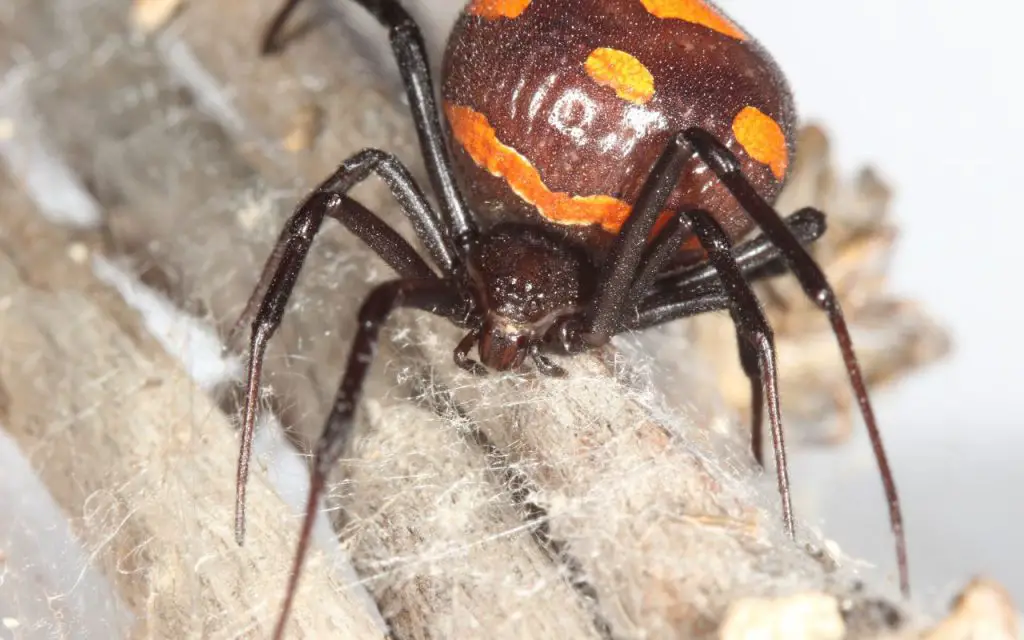
FAQ Relating to Mediterranean Black Widow Spider Facts
There are so many questions that people have regarding Mediterranean black widow spiders and the most frequent ones include the following:
1. Are There Black Widows in Greece?
The Mediterranean Black Widow spider is native to Greece. However, they are absent from large areas of mainland Greece. You are most likely to encounter them along the cost. They are more common the further south you go, too. This is because they have a fondness for dry, warm, mediterranean climate zones.
2. What spider is Mistaken for a Black Widow?
False Black Widow spider and Brown Widow are often mistaken for Black Widow. However, the False Blacks do not have the red coloration and love to stay indoors more than Black Widows. As a result, they are more associated with human bites than the latter.
On the other hand, Brown Widows are smaller than the Black ones and their brown color sets them apart. However, it is easy to confuse them with young Black Widows. The good thing is that they are not as poisonous as the Black ones.
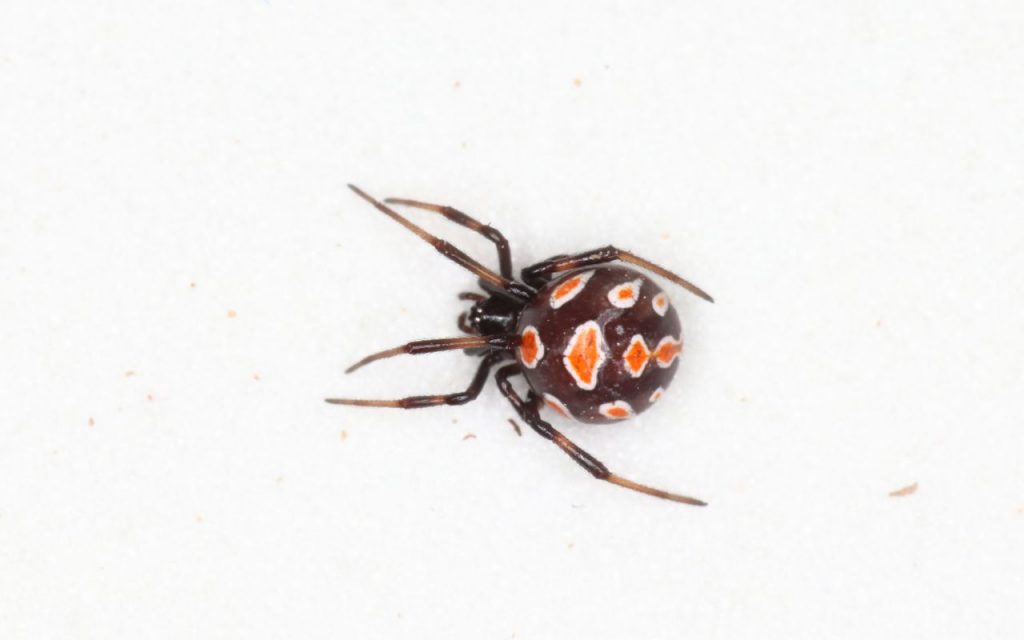
3. Is a Black Widow Spider Harmful to Humans?
A Black Widow spider is harmful to humans if it gets to bite. Nevertheless, it is rare for it to bite since it is less aggressive and only bites in defense. The poison may not be very fatal, especially if it is treated promptly. However, it can cause severe pain and nausea.
4. Do Black Widows Exist in Europe?
The Mediterranean Black Widow also called the European Black Widow is common across the Mediterranean region. Further north, there are no native Black Widows, but the Brown Widow has been introduced and is breeding in Poland, the UK, and possibly elsewhere.

